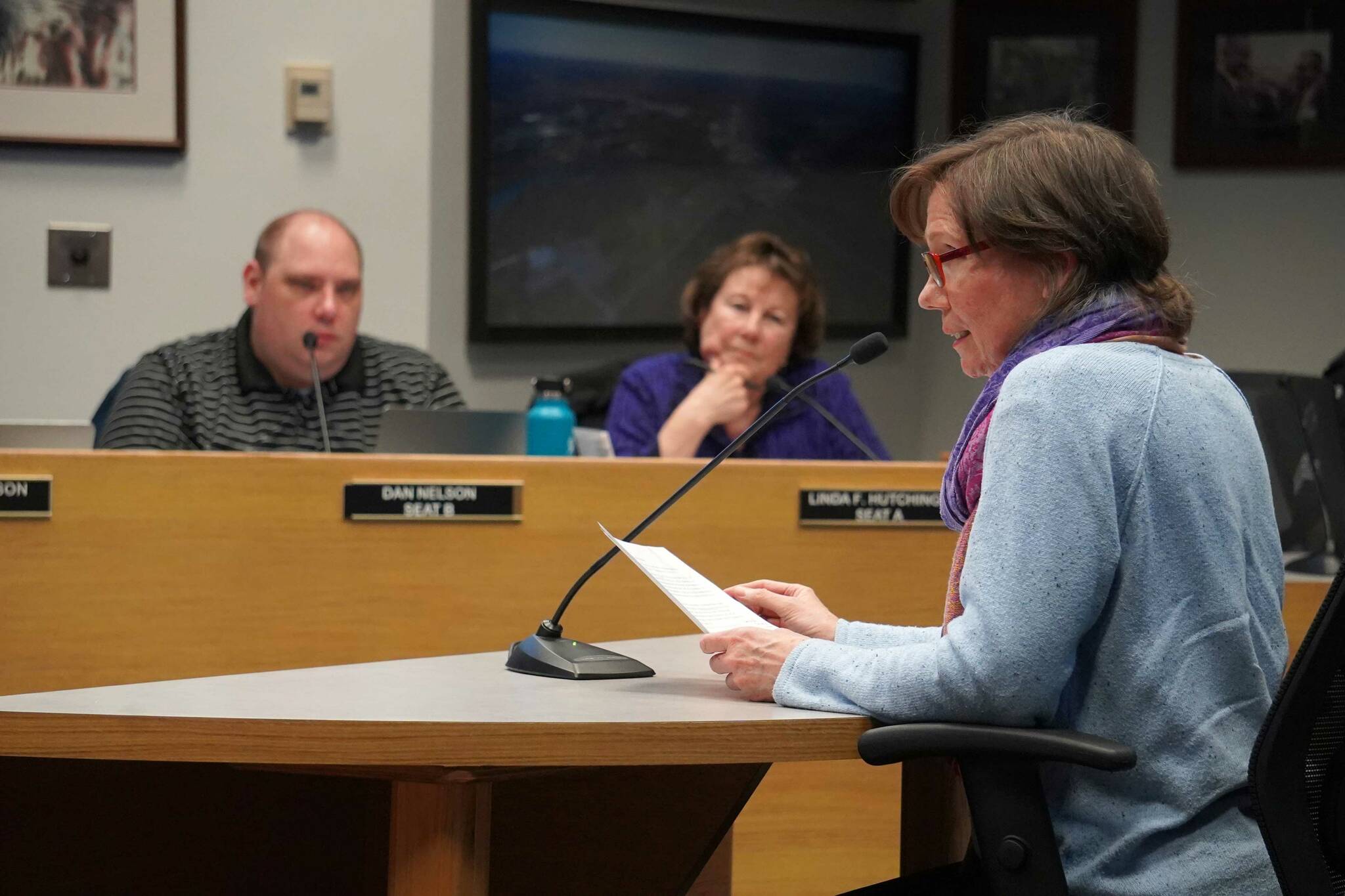Soldotna’s City Council on Sept. 11 killed an ordinance that would have rezoned part of a tract of land near South Kobuk Street to multifamily use. The ordinance was defeated in a 4-2 vote following more than 90 minutes of public testimony and deliberation.
According to the text of the ordinance, Jeff Dolifka, representing a company called Dolroco, applied to have part of a parcel located in the residential area behind Pizza Boys and close to the Kenai River rezoned to be entirely multifamily. That tract was already partially zoned for multifamily use. The application by the owners says that they made the application “in an effort to both address housing shortages and increase walkability.”
The other operators of Dolroco, per the application, are Joshua Cooley, Katherine Elsner, Mark and Sarah Rozak and Dolifka’s wife, Lindsay.
The ordinance was defeated with opposition by council members Dave Carey, Lisa Parker, Chera Wackler and Linda Farnsworth-Hutchings. Jordan Chilson and Dan Nelson voted in favor.
Soldotna Director of Economic Development and Planning Linda Mitchell, in a presentation to the council ahead of public testimony, said that the the rezone would meet goals of the Envision Soldotna 2030 Comprehensive Plan, in encouraging “a diversity of housing options for people of all ages, incomes, and household size.” The Riverfront Redevelopment Plan, too, she said, calls for an increased housing need as the city prepares to develop a broad swath of land alongside the river.
A report from Mitchell’s department, included with the ordinance, says that the rezone is recommended “based on the current need for additional housing, and the fact that this parcel meets the basic standards for rezoning.”
Several homeowners in the area spoke in opposition of the move during the council’s meeting. Kathy Madison said she owns three homes in the area and that the rezone would affect their value. Bob McCard said a petition in opposition had seen nearly 50 signatures. Brian Shackleton said he didn’t see “demonstrated need for that much multifamily property.”
Several people, including Madison, said that they feared a multifamily structure would bring more than 200 people to the area. Mike Eberhard said that such a move would mean “losing what made Soldotna fun or nice.”
Several people, like Jeff Moore, said they opposed the rezoning because a plan hasn’t been presented by Dolifka and other developers.
Dolifka responded to those concerns by saying that a plan hasn’t yet been developed because of the cost of completing the design work, that a multifamily rezone would allow “maximum flexibility.”
That call by residents for a plan held weight with Farnsworth-Hutchings, who voted against the ordinance. She said that, when she’s pursued and achieved Soldotna rezoning in her own endeavors, she came with a plan.
“That’s the only way people can buy into it,” she said. “With a plan.”
Vice Mayor Parker was also opposed, saying she wanted to see a development plan before approving a rezone.
Carey, who voted against the ordinance, called the council’s action on the ordinance “one of the most important decisions” made since he’s joined the city’s government. He said, looking at the department recommendation, that it seemed the recommendation comes only because the rezone isn’t “incompatible” with city code.
“I’d be interested in understanding the philosophy, then, that the city is using,” he said. “As long as it’s not against, is it then to be promoted?”
Nelson said that he understood people’s concerns about seeing development in their backyards, but that the city needs housing — especially affordable housing. Of concern, he said, is the idea of the city telling the developer how they can and can’t use their property. He voted in favor of the ordinance.
Wackler said that the council is hearing a lot from property owners, many with “multiple properties in the area.” A perspective the city hasn’t heard, she said, is from people who stand to benefit from more housing options.
“I don’t necessarily want progress for progress’ sake, but without housing — without new people coming in an aging population — we’re going to have difficulties,” she said.
Despite that view, she voted no “at this time.”
Chilson took a more decided stance in support of the ordinance. He said that concerns of “as many as 253 units” are unrealistic because of the requirements of space and parking.
Concerns by residents about increased crime or declining area test scores, Chilson said, “surprisingly” didn’t come up during the meeting — they’re included in meeting notes from the planning commission. Chilson said he disliked the “unfortunate stereotype” of people in dense urban environments or who live on lower income.
Many of the people who testified, Chilson said, reported owning multiple homes. Finding housing in Soldotna, he said, can be difficult. When he sought his first apartment, he couldn’t afford one in Soldotna. He lived on Kalifornsky Beach Road and later Kenai before becoming established enough to permanently move to Soldotna.
“There are young people that want to be part of this community, that want to find long-term rentals or potentially even condos,” Chilson said. “I think it’s important that we look beyond our own properties and think not only what is best for our homes, but our community as a whole.”
Chilson said that he wouldn’t have an issue with seeing an apartment building go up near his home, because he would be happy to know that people are getting housing — “that’s a thing that’s important to me.”
A full recording of the meeting, the ordinance, and more than 100 pages of supporting documents and public testimony are available at soldotna.org.
Reach reporter Jake Dye at jacob.dye@peninsulaclarion.com.

